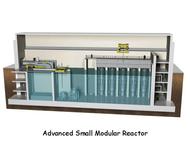Data Centers & AI - ORIGINAL CONTENT
- By:
- Edward A. Reid Jr.
- Posted On:
- Dec 17, 2024 at 6:00 AM
- Category
- Energy Policy, Climate Change
Several “Big Tech” companies are planning to build data centers or AI facilities which would require as much as 1 gigawatt of reliable power supply. The first move in this direction was Microsoft’s decision to contract with Constellation Energy to reopen one reactor at the Three Mile Island nuclear plant to supply a Microsoft data center exclusively over a 20-year period. Other companies are pursuing powering their data centers and AI facilities with modular nuclear reactors in the 200-megawatt class.
As the grid transitions toward a renewable plus storage generation structure, it seems likely that data center and AI facility developers will choose to install dedicated DEFR generation (SMRs) to assure the availability of reliable power and avoid exposure to grid outages resulting from either generation inadequacy or transmission and distribution infrastructure damage. A 1-gigawatt facility could be powered by a fleet of 5 SMRs, if adequate support were available from the utility in the region, or by a fleet of 6 SMRs if adequate utility capacity to carry the facility through a refueling or unplanned outage of a single generator were not available. Refueling can typically be scheduled for the shoulder months when utility demand is unlikely to peak. It is telling that, at least so far, no data center or AI facility developer has proposed to power a standalone facility with a combination of renewable generation and storage.
Large loads which operate 24/7/365 operate at a much higher load factor than the utility grid, making more efficient and cost-effective use of generation infrastructure. Ownership and operation of dedicated generation infrastructure allows the facilities to control their energy costs. Ownership also assures that adequate power will be available when the data center or AI facility is ready to begin operation, rather than relying on adequate and timely response from the local utility and its regulators.
Integration of onsite generation also offers the opportunity to recover heat from the generators to provide space heating or to power absorption chillers for facility and equipment cooling. Recovery of heat rejected by the onsite generators increases the overall energy efficiency of the installation, since it offsets the requirement to use electricity generated at the site for cooling. Cooling is likely to be a year-round requirement in these large facilities because of the heat given off by the computing and communications equipment. However, some heating might also be required in office and maintenance spaces during the winter months.
This approach places the investment required to power the data center or AI facilities on the owners of the facility, isolating utility ratepayers from those incremental generation and transmission investment costs. That will be important as the transition proceeds, since the investments in generation, transmission and distribution facilities necessitated by “all-electric everything” would strain utilities abilities to finance them. Also, the state utility commissions are likely to resist these large investments because of the impact on consumer rates. The utility commissions would also be dealing with the issues surrounding decommissioning of existing fossil fuel generators and the natural gas transmission and distribution facilities which currently serve those generators and other direct end uses, as well as recovery of undepreciated utility investment in the decommissioned facilities.


